
A-7D
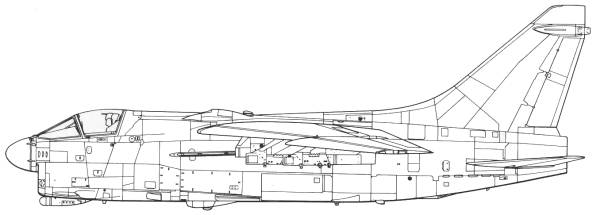
The LTV A-7D came to be as the result of a Navy request for proposals for a replacement for the A-4 issued on June 29, 1963. The Navy chose four finalists; Douglas, Grumman, North American and LTV (Ling-Temco-Vought). The contract was approved in February of 1964 for three prototypes designated YA-7As. The flight test program for the YA-7A was still underway when the U.S. Air Force announced its intention to purchase the A-7 for use by the Tactical Air Command. The Air Force planned to use the A-7 as a replacement for the A-1 Skyraider, the F-100 and the F-105. The A-7D, as it was designated by the U.S.A.F. was basically a modified A-7A. The Air Force wanted a more powerful engine and contracted Allison to license produce the Rolls-Royce RB162-256 turbo-fan engine.
Other changes included were the installation of a flying boom type refueling receptacle, increased armor protection for the engine and and pilot using boron-carbide armor. The aircraft's fire power was increased by replacing the two Mk 12 cannons with a single General Electric M61A1 Vulcan multi-barreled rotary 20mm cannon. To further increase fire power three different gun pods were cleared for use; these included the SUU-16/A and SUU-23/A 20mm gun pods or the GPU-5/A 30mm gun pod. The A-7D was equipped with a sophisticated targeting and navigational computer. The AN/ASN-91 digital computer used inputs from the Doppler AN/APN-190 radar, the AN/APQ-126 forward looking radar and the AN/APN-141 radar altimeter to compute the aircraft's exact position. To provide this data to the pilot a head-up-display (HUD) replaced the optical sight used in the A-7A an A-7B. The HUD displayed information such as airspeed, altitude, heading, targeting cues, weapons status and other information pertinent to navigation or attack.
The A-7D retained the same wing span and length as the A-7A although the height was increased due to the use of larger tires and wheels. The internal fuel capacity was reduced due to the used of self-sealing foam filled fuselage tanks. Top speed for the A-7D was 698 mph and the normal cruising speed was 507 mph. Deliveries of the A-7D began during September of 1969. The A-7D saw its first combat use with the 354th Tactical Fighter Wing based at Korat Royal Thai Air Base, Thailand. The A-7Ds flew strikes against targets in Laos, Cambodia and North Vietnam. In the two years that the A-7D was in combat over Southeast Asia only four were lost, a real tribute to the toughness of the aircraft and crews. A total of 459 A-7Ds were produced in seventeen production blocks and as of 1991 over three quarters of these aircraft were still in active service with the Air National Guard. The Air National Guard operated 354 A-7D and A-7Ks assigned to some thirteen squadrons from Puerto to South Dakota. The Air Guard actually received some new production aircraft right off the assembly line marking the first time that an air guard unit was provided with new versus hand-me-down aircraft.
During 1977, the Air Force modified the remaining A-7Ds with automatic maneuvering flaps and a Pave Penny laser marked target seeker system. The Pave Penny system was housed in a tear drop fairing mounted under the air intake just forward of the nose wheel well. The system is slaved to the HUD and provides the pilot with aiming data for laser guided munitions. additionally a pair of ECM button antennas were added to the nose, one on either side of the intake.
The last A-7Ds in combat were from the 166th TFS and the 175th TFS of the Ohio and South Dakota ANG. These units were involved in Operation Just Cause, when the U.S. ousted Manuel Noriega from Panama in December of 1989. The A-7D flew close air support for U.S. forces in and around Panama City.
The Kit
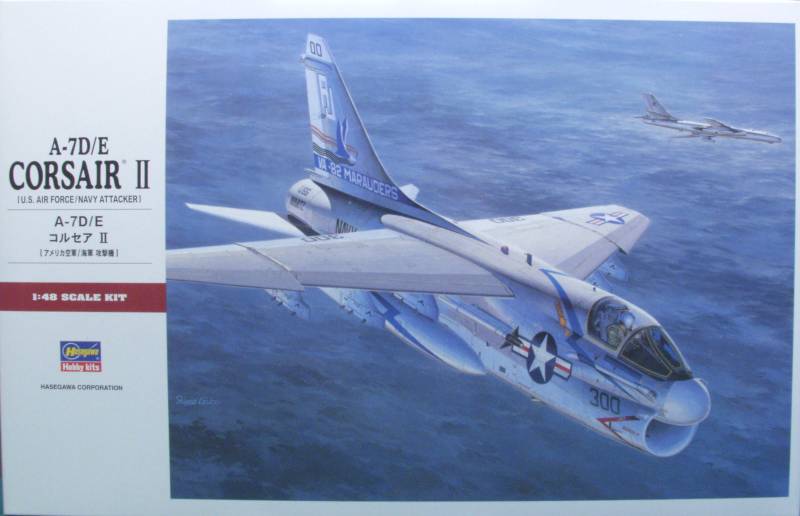
All of the flight control surfaces for the wing are molded separate including the leading edge slats. The horizontal surfaces of the tail are the move able type so there are not separate parts. The speed brake on the bottom can also be posed up or down. The fuselage has the electronics bays on both side of the fuselage molded open with detail inside and they include the doors for these that can be displayed in the open position. How well these doors fit if you want them closed is always an issue but I did not try to fit them as part of this review. The kit contains parts to build either the Navy version A-7E or the Air Force A-7D. The instructions have these as totally separate sections so one does not need to constantly be check for which part to use. The cockpit is probably detailed enough for most. I read some where that the ejection seat was either not correct or not not very well detailed so I picked up an after market one to use. The kit comes with a pilot figure if you desire to use one. The instrument panels have raised dials and the larger ones have some internal dial detail. There are no decals for the IP so you are on your own to paint them up.
Due to the differences between the two versions there are a lot of small sprues included and some of these are clearly marked for the version they are intended for so you can set them aside to eliminate the possibility of using the wrong part. One thing I noticed was that they do give you separate main wheels for each version and the hub detail is different for each but they are both the same size whereas the ones for the Air Force version should be larger, they are not. The only under wing stores provided for the Air Force version are launching rails and fuel tanks. A weapons load out chart is supplied showing what could be carried at each under wing station and suggests purchasing their weapons set for more options. The Navy version also includes launch racks and side winders that mount on the fuselage sides. The instructions show mounting the racks on the Air Force version but not the missiles. I'm not an expert on these things so check your references. The wings can be built either folded or not. Other reviews point to fit problems either way so I suggest reading the linked build/reviews. OK, lets look at the sprues. In some cases if there were duplicates only one is shown.
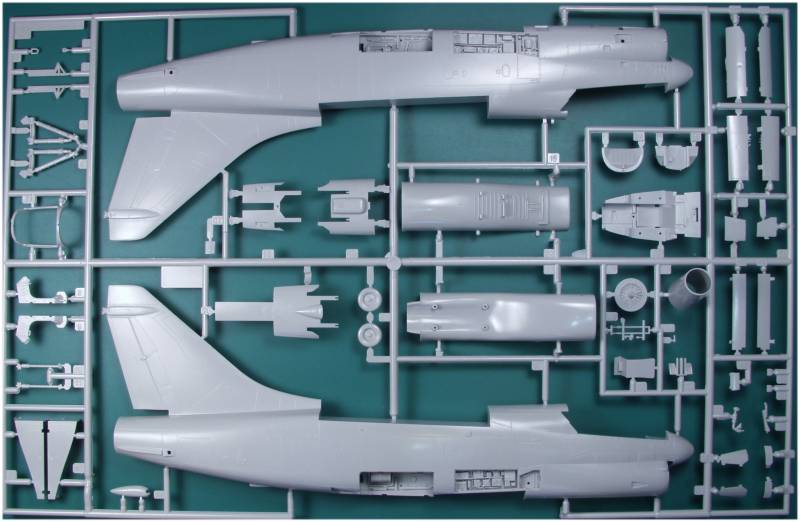
Close up views of the avionics bays on both fuselage sides.
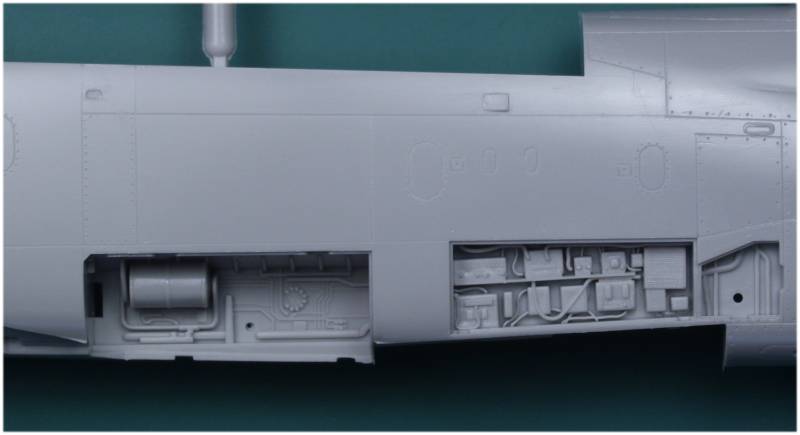
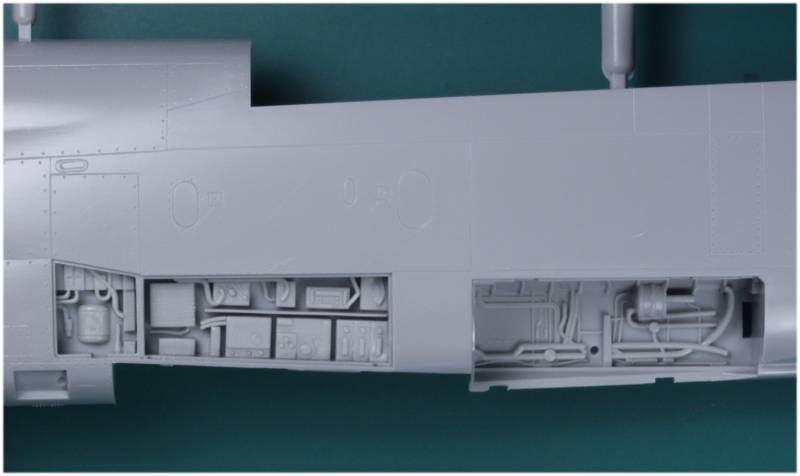
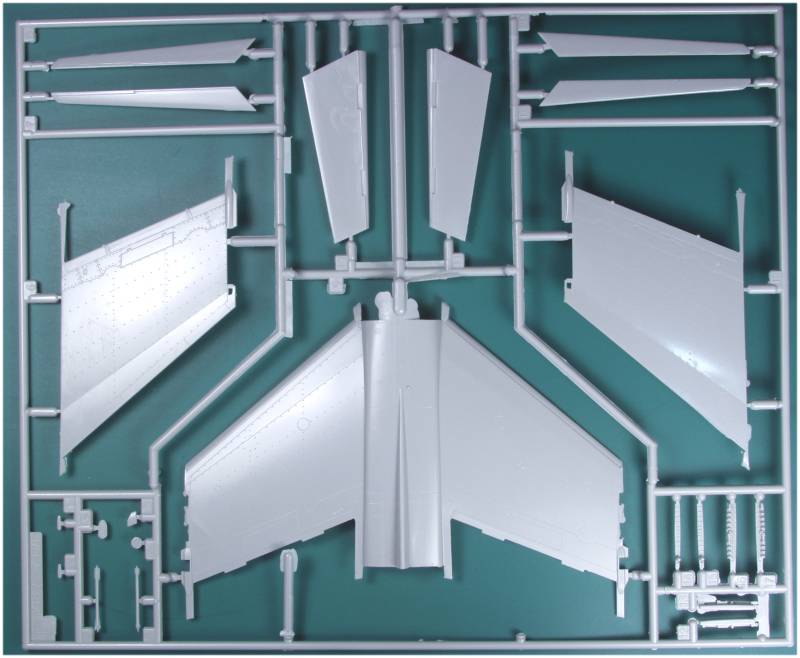
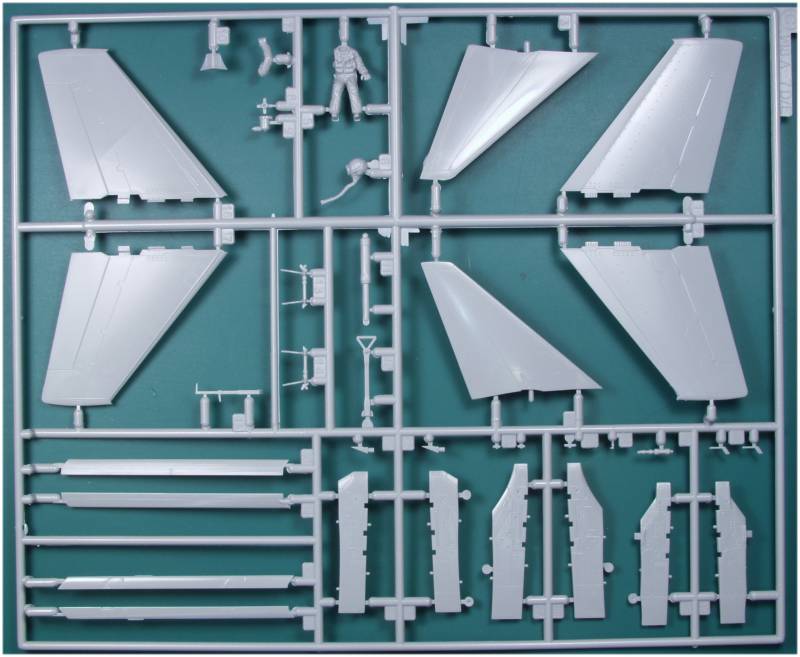
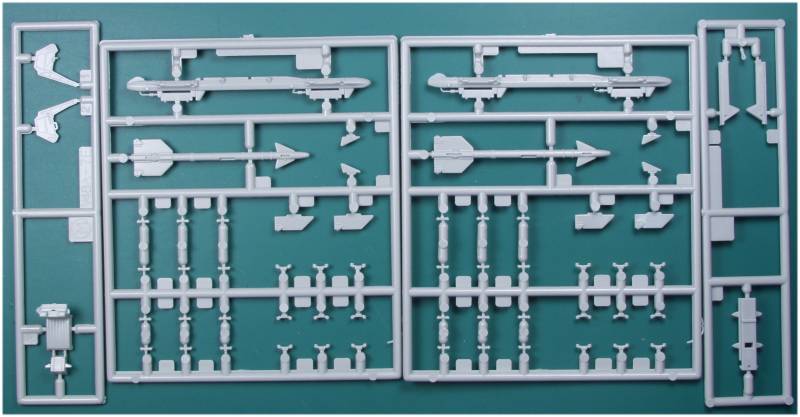
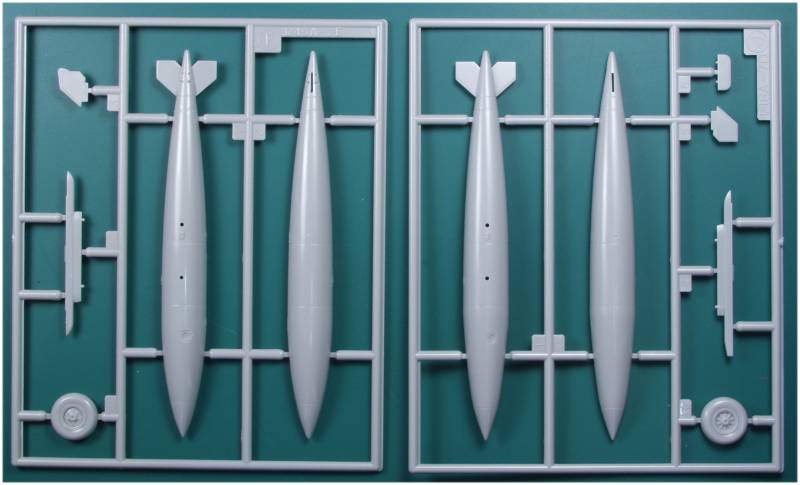
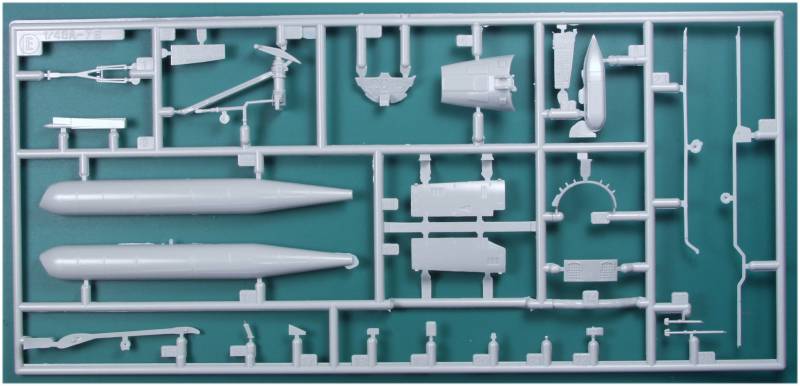
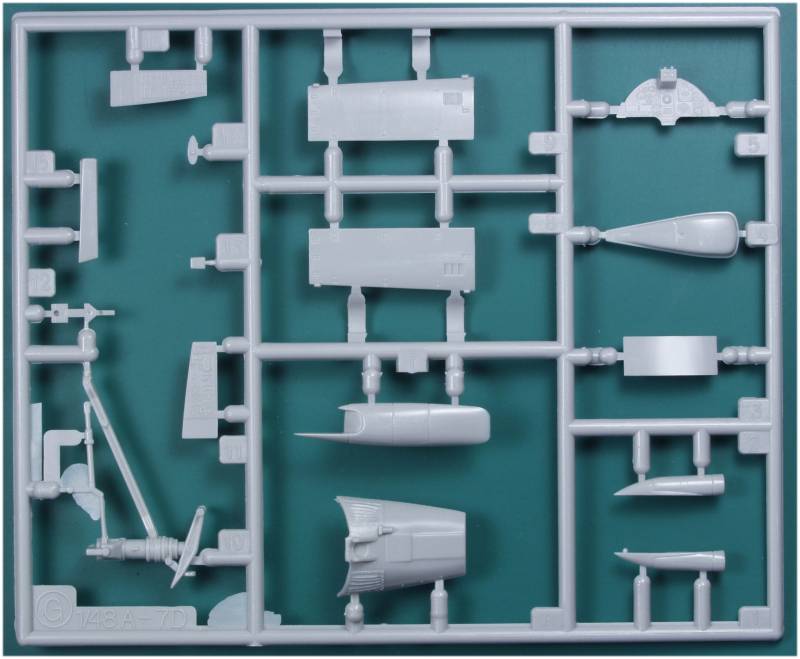
The kit also has a
small PE fret (not shown) to represent some exterior conduit covers
used on the sides of the fuselage above the avionics bays on both
sides.
The clear parts are thin and clear with little optical distortion. The frame lines are just scribed making masking a bit more difficult. In spite of being bagged separately my main canopy had some abrasion marks that will need to buffed out. The canopy can be posed open if desired.
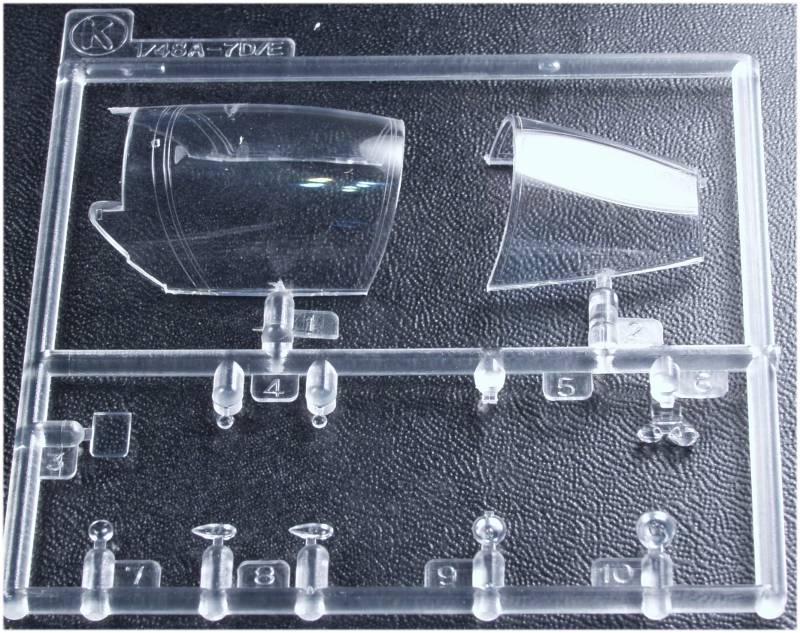
The decal sheet is huge and includes markings for two Navy aircraft and one Air Force aircraft. The sheet includes a lot of stenciling and warning labels. The decals look a bit thick to me but should be opaque. Registration is good and an at least some of the stenciling is readable. There is more excess film on most of them than I like to see.
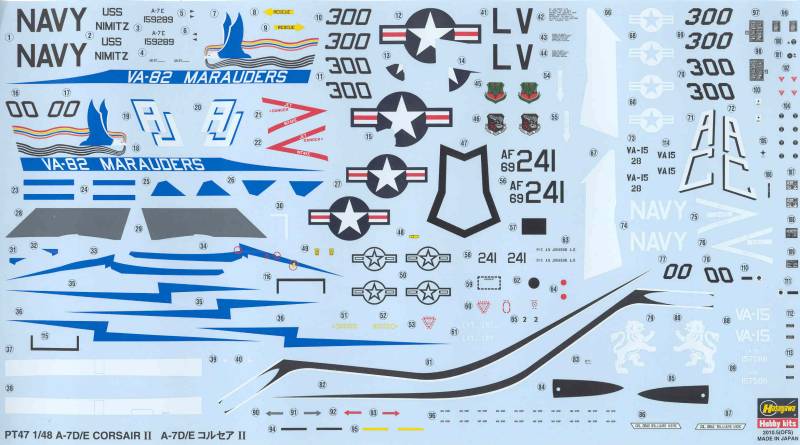
The instructions consist of a stapled booklet 12 pages long and in the portrait layout. The assembly of the different versions is handled separately with the Navy version first followed by the Air Force version. While this should have made things easier it resulted in a lot of steps crammed into a few pages and I found them to be very much crowded together and hard to interpret. Maybe a result of my age but I have seen easier to read sheets. The front page repeats the box art and has a brief history in Japanese and English. Page 2 has a parts map, a paint chart with generic color names and Gunze numbers and icon information. Pages 3-5 have the assembly diagrams for the Navy version in 14 steps and pages 6-8 are for the Air Force version in 14 steps. Pages 9 and 11 have the painting and marking instructions for the two Navy aircraft and page 10 has the same for the Air Force version. The last page has decal installation instructions and the usual safety warnings.
After Market Goodies
I
had an ulterior motive for buying this kit as my old Air Guard
unit
transitioned to the A-7D from the F-100C years after I left it.
The
decal sheet made for the 2009 IPMS National Convention included
markings for an A-7D in the markings of my old unit. While I
attended
the convention I did not purchase them at the convention and was
lucky
that Two Bobs still had some in stock when I went looking for
them.
Since that time Two Bobs has shut down so if you are interested
you
will need to check eBay or post a request on one of the forums.
The sheet was printed by Microscale and is up to their
usual
fine standards.
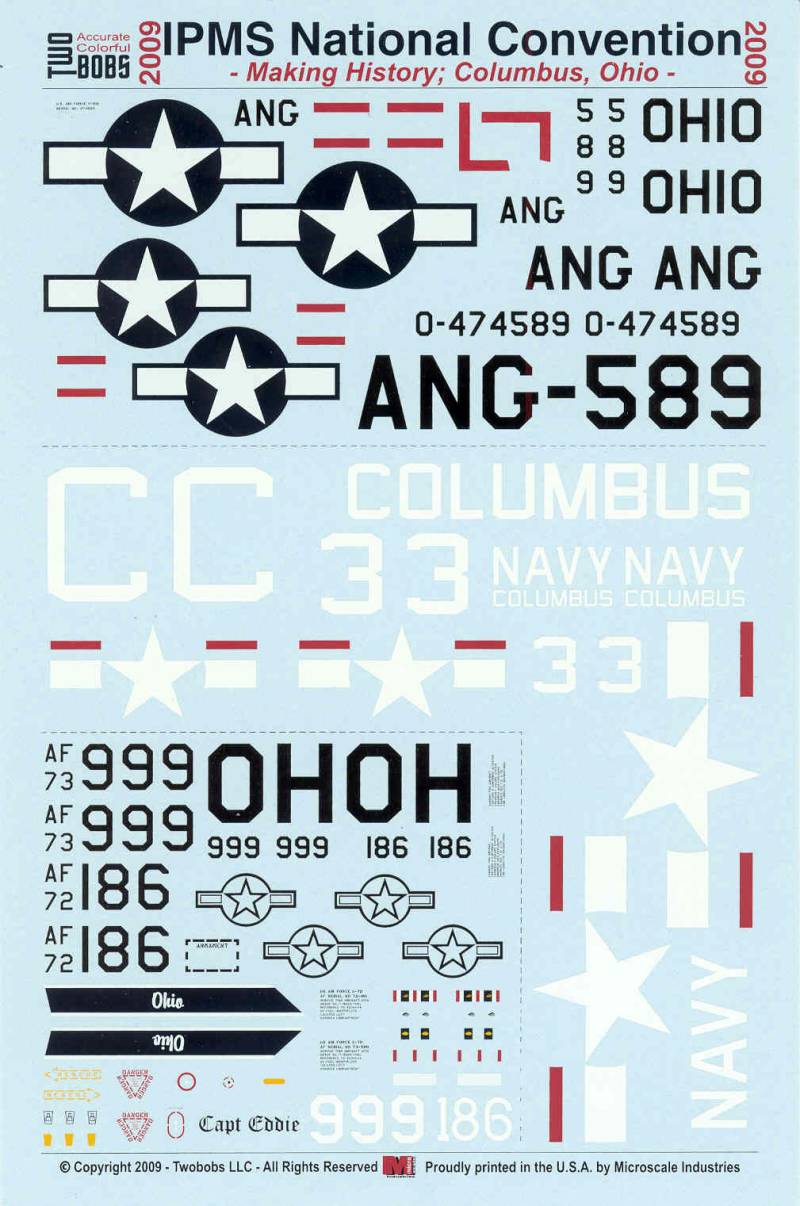
The ejection seat I chose was from Aries (4442) the ESCAPAC 1G-2, it's molded in gray resin and had no defects, the set also includes a small PE fret with belts and harnesses on it.
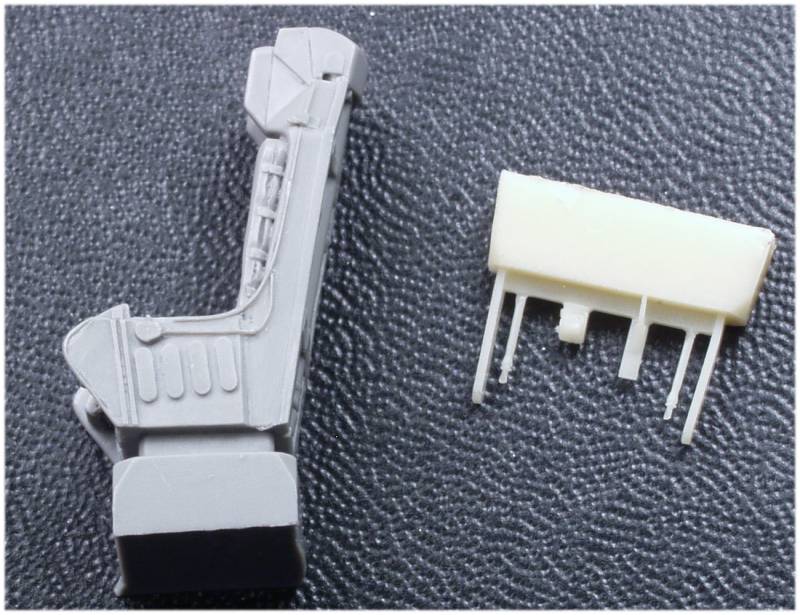
Conclusions
I'm not sure when this kit was originally released, the kit reviewed had a 2010 date on it but I suspect the base kit was released much earlier. I also think that Hasegawa tried to please too many with one kit and as a result made it a more difficult build. If you read the linked build reviews they mention fit issues with the folding wings and the wing to fuselage joins so a lot of test fitting and probably filling and sanding will be required. Other than that the kit appears to build up into a nice representation of the A-7. Recommended for modelers with a bit of experience dealing with complex kits and fit issues.
Links to kit build or reviews
Build reviews can be found here and here. Note: these are not the exact same kits but the plastic is the same none the less.
References
A-7 Corsair II in Action by Al Adcock